China
The land of Mysteries, Hardwork, and Developments!
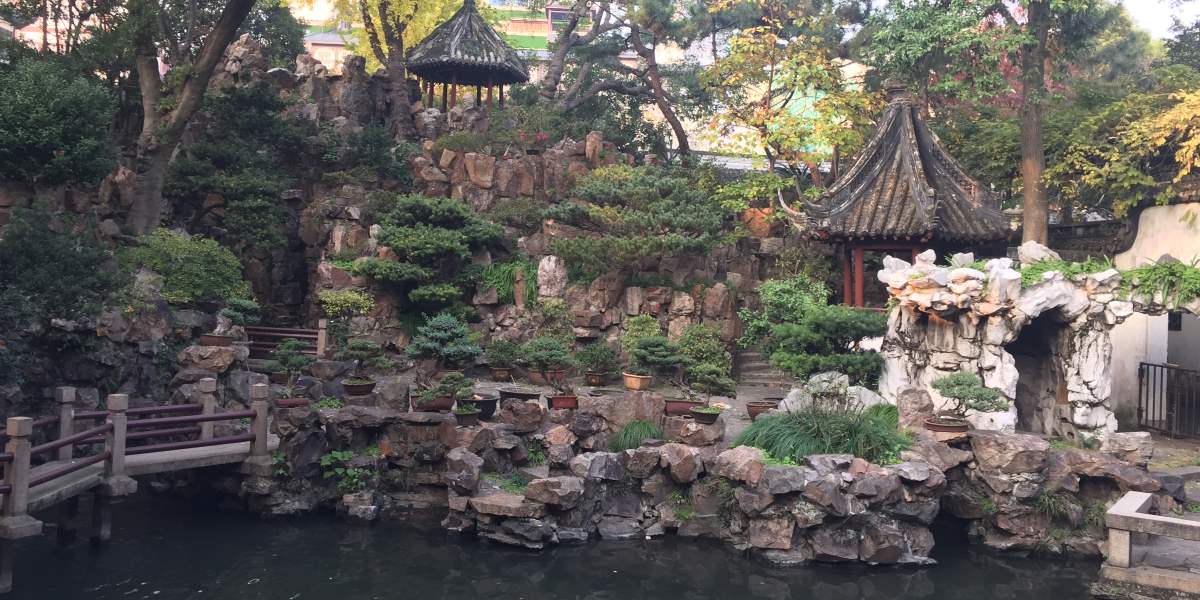


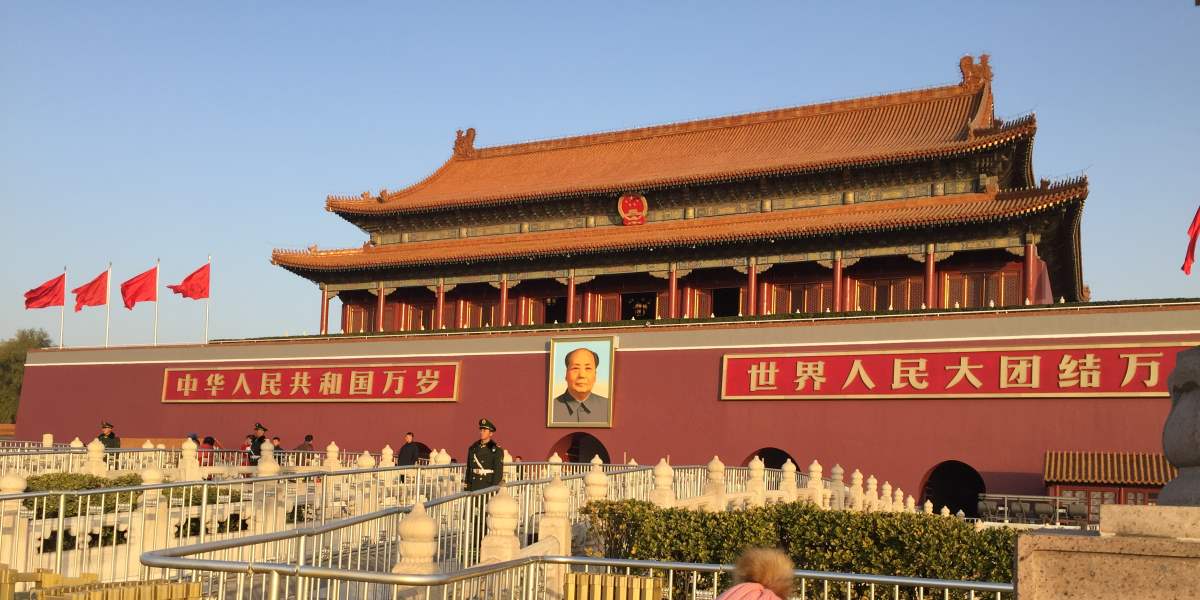
The land of Mysteries, Hardwork, and Developments!




Introduction
China is the fourth largest country in the World, and it shares borders with 14 countries. (Russia is the only other country that has so many borders).
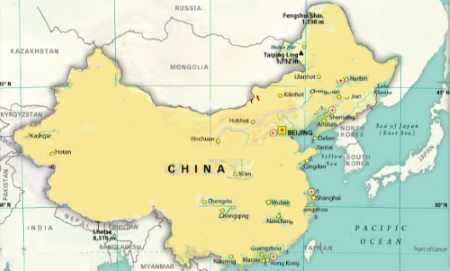
Map of China
China has land borders with Mongolia, Russia, India, Afghanistan, Bhutan, Kazakhstan, North Korea, Kyrgyzstan, Laos, Myanmar (Burma), Nepal, Pakistan, Tajikistan, and Vietnam.
Furthermore, it shares maritime borders with Brunei, Indonesia, Japan, South Korea, Malaysia, Taiwan, and the Philippines.
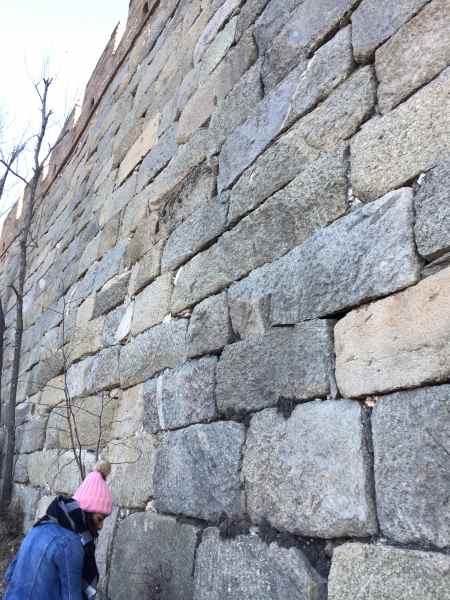
I used to wonder how just a 'wall' could remain as one of the Seven Wonders of the World for over 2 millennia! Seeing is believing. Seeing a small portion of this 21196 Kilometers long wall can convince its greatness. More when you realize that its construction began way back in BC770. It is not just a wall but an integrated defensive system. It contains built-in fortresses, watchtowers, and beacon towers for surveillance, communications, and so on.
The Great Wall got constructed in parts during various Dynasties with a sole purpose- to protect the Territories of ancient Chinese states against the attacks of nomadic tribes from the northern (mainly the Mangolian) side.
The entire wall was made using granite rocks of varied sizes, bricks (mainly on the top parapet), mud, and mortar. The length initially was only 5000 kilometers. The wall does not have a uniform width and height. It depended on the terrain and other structures in between. The base is generally wider, whose average width is about 6.5m (21 feet), and it tapers to the top and becomes 4 to 5 meters (13-16 feet). The average height is 6 to 7 meters, and certain portions are up to 14 meters high. It is impossible to access the entire stretch of a twenty-one thousand-kilometer long wall. Moreover, 30 percent of the wall is damaged due to aging. 'Badaling' and 'Mutianyu' portions in Beijing are the two ideal locations to scale and feel the wall.
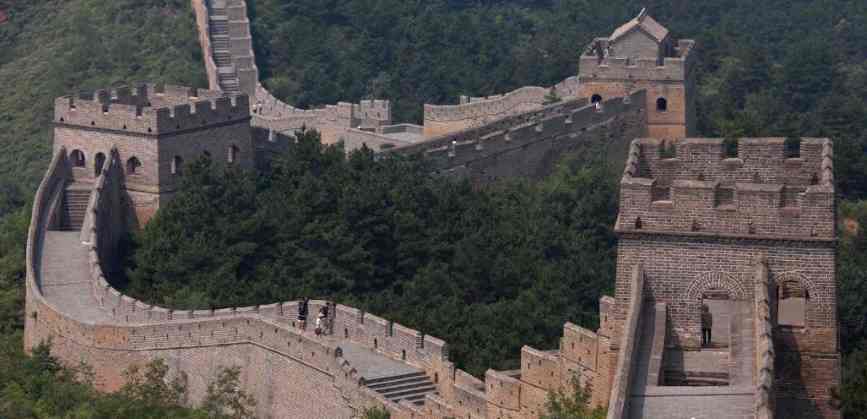
Typical Structure of the Wall
A ropeway system is available to go to the top of the wall, and for coming down either the ropeway or a slider called “toboggan” can be used. It is a tiny cart with hardly enough space to sit on, and that slides on a metal channel from the top of the wall.
The Toboggan system was set up in the year 1998 for the convenience of visitors. It slides on a winding channel of 1.5 Kilometers. The cart can gain speed up to 45 Km per hour. The rider can control the speed using a hand-operated braking mechanism. Though it sounds a little scary it is great fun to ride it.
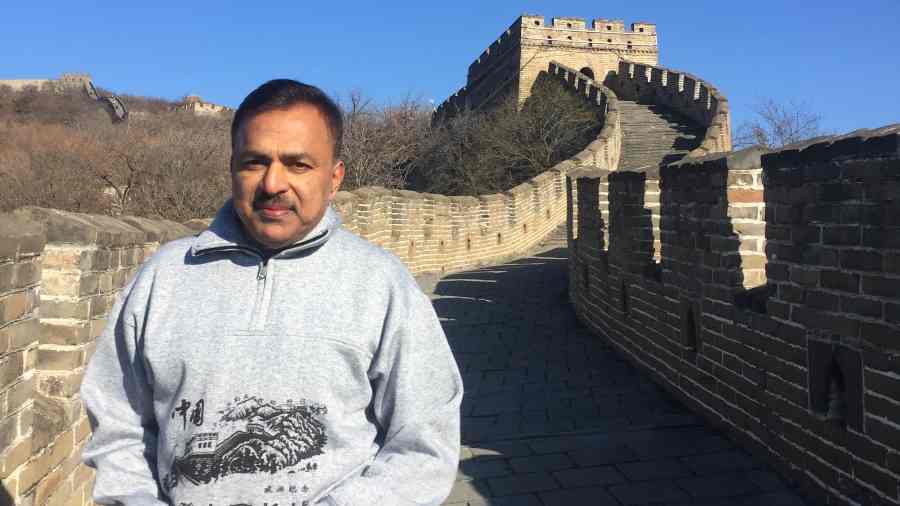
'On top of the Wall'
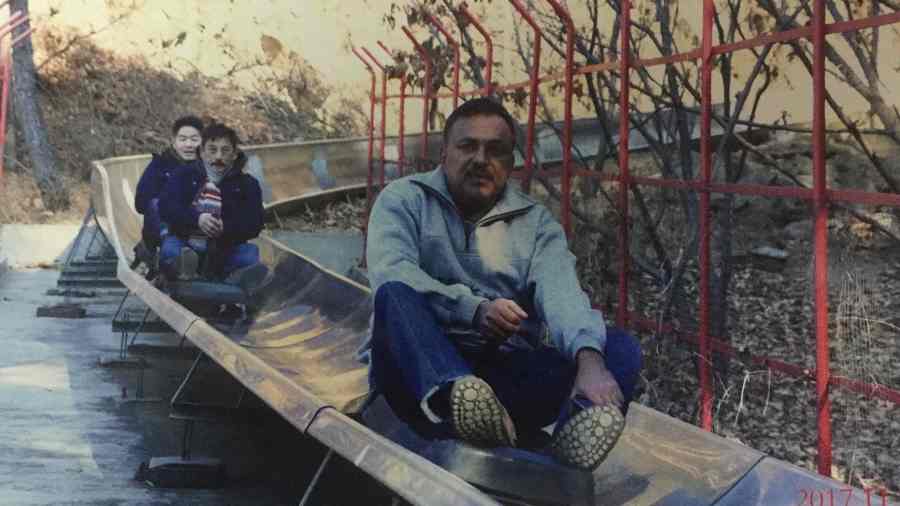
Toboggan Landing
The Great Wall is not the only thing to be talked about Beijing. Being the capital city of China and also being a historical place, it has so many other attractions. More to come in the future updates....
Shangahai, known as global financial hub, is the biggest city of China. It is one of the world’s largest seaports and a major industrial and commercial centre of China. 'Shanghai Maglev' -World's fastest passenger train is another attraction for a visit.
Trains are available for traveling from Beijing to Shanghai and I chose to travel by train to get a glimpse of the interior places. Above all, it gives a local experience of a train journey in China.

Beijing Railway Station
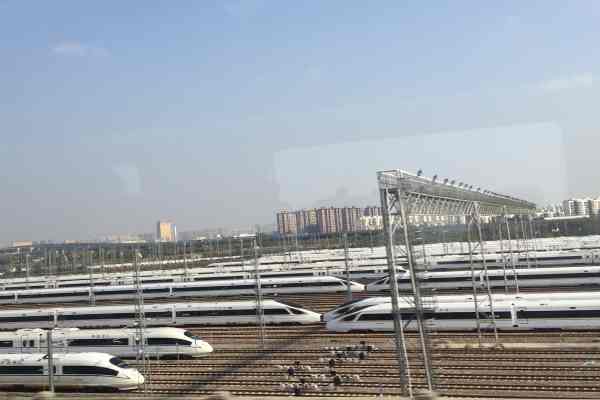
Railway tracks
Beijing railway station's interior resembles any modern airport. The distance from Beijing to Shanghai is 1,318 km, and it takes 5-12 hours depending on the train you choose. Day trains are faster while sleeper trains take a longer time to reach. The trains are clean and comfortable.
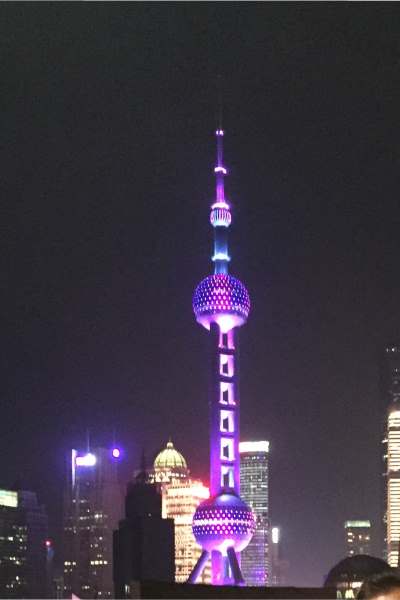
This was the city's International Settlement area once. The Bund remains as the prominent Promanade of Shanghai. Walking on this long stretch, situated on the west bank of the Huangpu River is a very pleasant, enjoyable experience during daytime as well as at night.
On the west side of the promenade, there are over 50 colonial buildings. Major banks had their headquarters in some of these buildings. The East side of the Bank is the river and across the river huge skyscrapers, towers, and other buildings are seen. The 468 meters high Oriental Pearl TV Tower is one of the highest in Asia. Sightseeing boat tours that take you around the port area is another attraction of this place.
The bund and the river witness the contrast of old colonial structures on one side and a modern skyscraper lifestyle on the other side. Both sides are connected to each other by ferry services, multiple tunnel roads passing under the river as well the metro line.

The Bund
The above view of Pudong from the Promanade across the Huangpu River is beautiful day and night. Oriental Pearl TV Tower, World Financial Center, Shanghai Tower are some of the prominent buildings seen. It is interesting to know that so many people commute under this river every day using Metro trains and other vehicles.

Shanghai Maglev is the fastest passenger train in service in the world as of now (2020). A Maglev train does not run on wheels. It floats or flies about 4 inches above the path using strong magnetic fields. The word Maglev is the short form of ‘Magnetic Levitation’. Because it hardly uses wheels, there is no metal friction and enables higher speeds.
Maglev technology was introduced in England for the first time way back in 1984. Only Japan, China, and South Korea could work further on it and bring out maglevs of higher speeds. At present, China is the winner in operating the fastest Maglev in the world. Currently, both China and Japan are working further on this technology, and running speeds up to 1000 Kilometers per hour may become a reality in the future. Developments are in the advanced levels, and we will see Maglevs running at speeds beyond 600 Km per hour very soon.
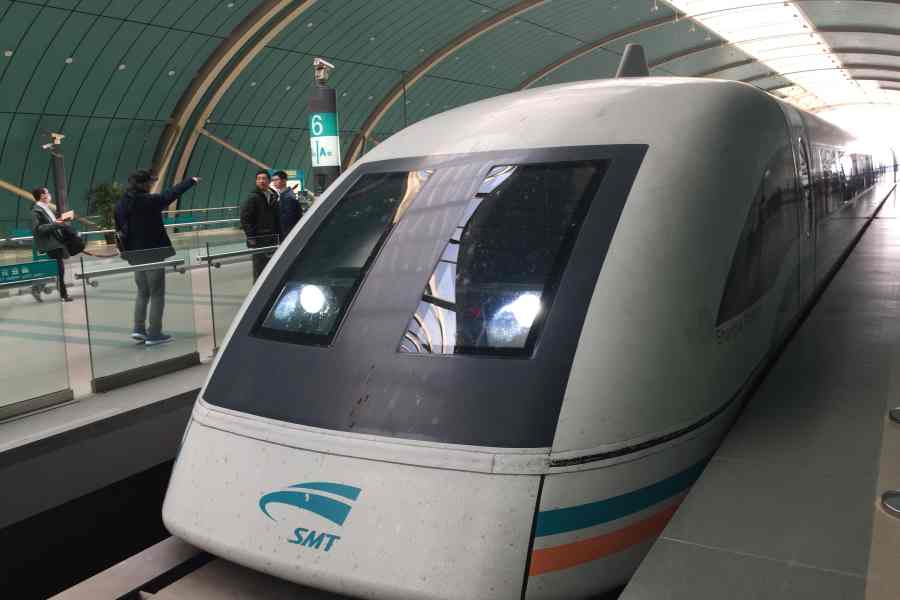
Shanghai Maglev
Shanghai Maglev runs between Shanghai Pudong Airport and the city center (Longyang Road) and hits speeds up to 431 kilometers per hour. The speedometer display in the coach shows the speed in real-time.
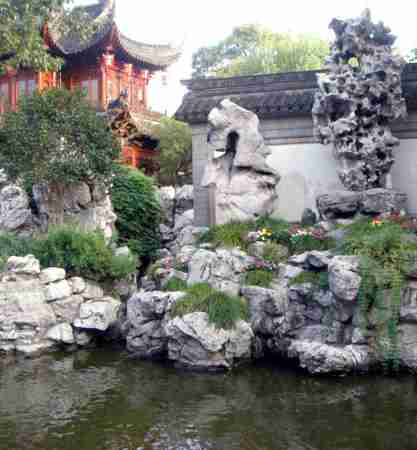
Yuyuan Garden aka Yu Garden is an ideal place to witness ancient Chinese Garden Architecture, Rock works, Sculpture, Calligraphy, and Artworks. Spread across in a stretch close to 5 acres, it offers views of exquisite art objects. It has two different areas known as the outer garden and the inner garden. While walking through the inner garden you will come across building units made in ancient architectural designs. Each part of these units has innumerable detailed artworks from the floor to the tip of the roof. The inner pool with plenty of ornamental fishes, the zig-zag bridge with nine turnings, and the jade works have their tales to tell based on beliefs and rituals.
The Yuyuan Bazaar, located in nearby lanes and streets, has many restaurants and shops where local food can be tried. This place is good for souvenir shopping as well. If you enjoy walking, the Bund is only a walking distance from here.